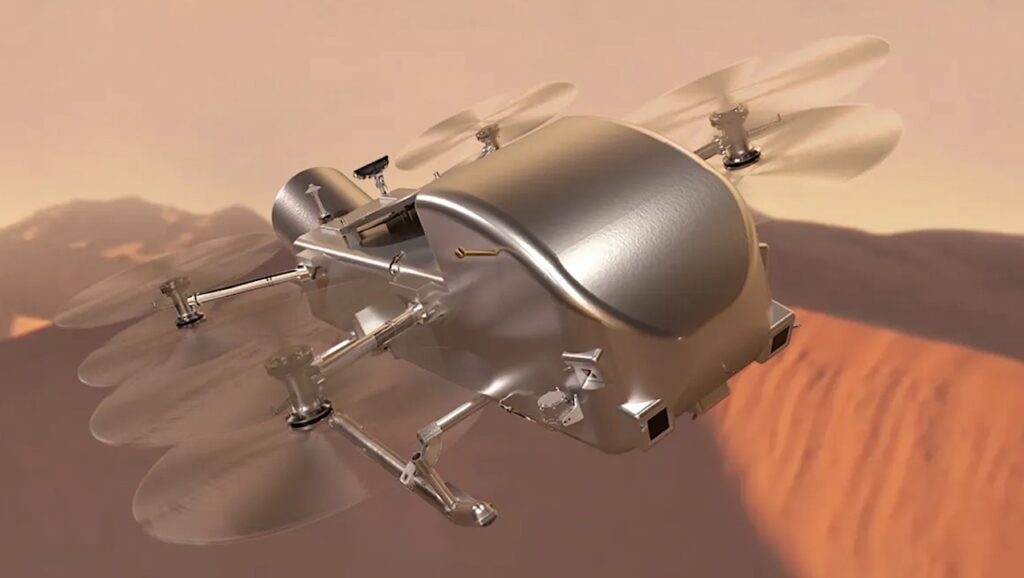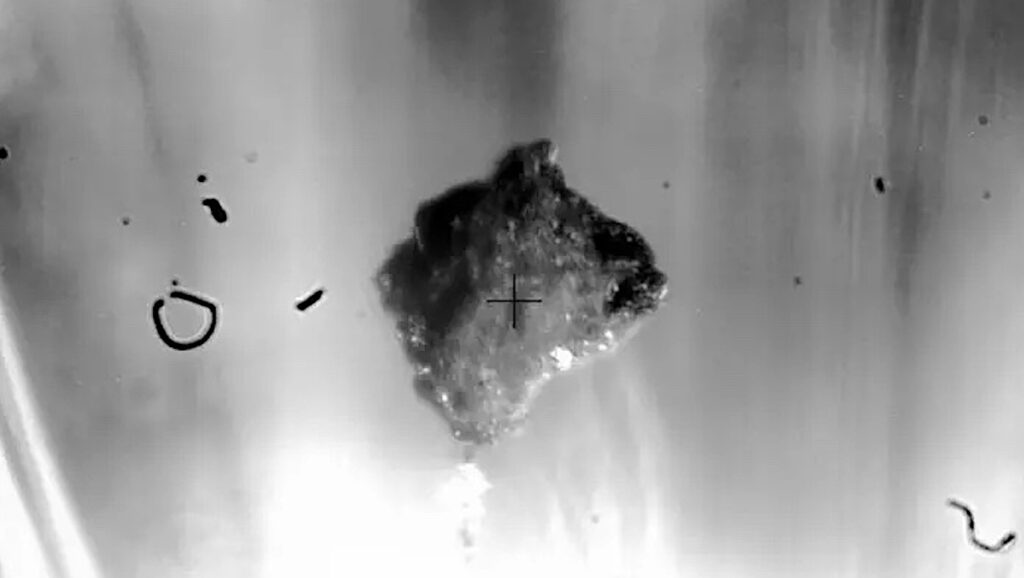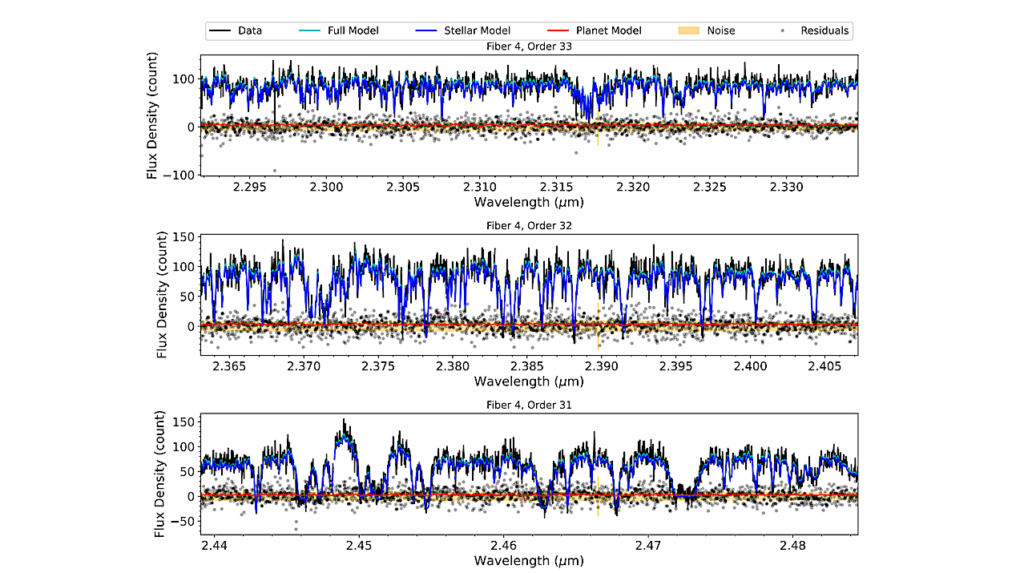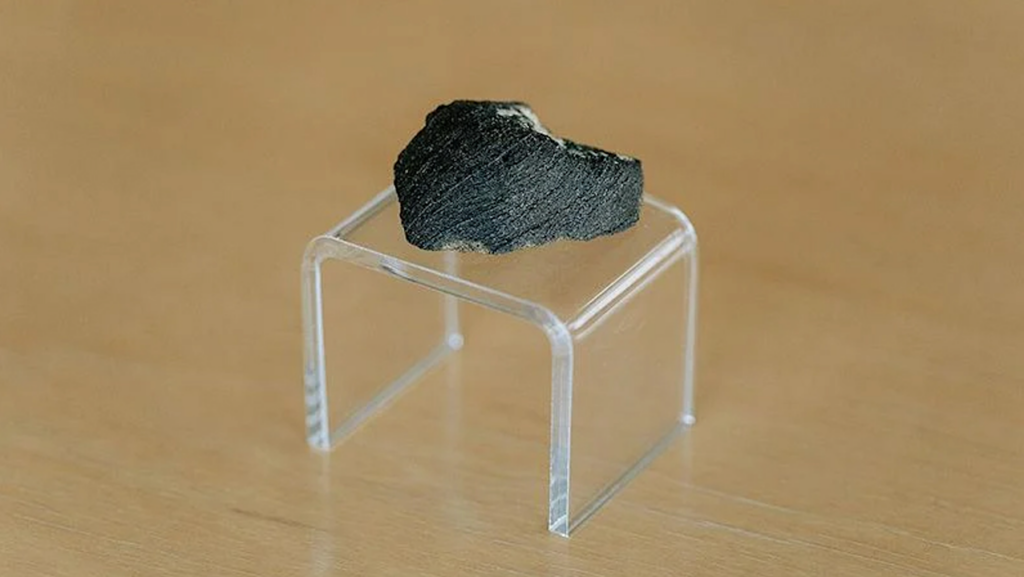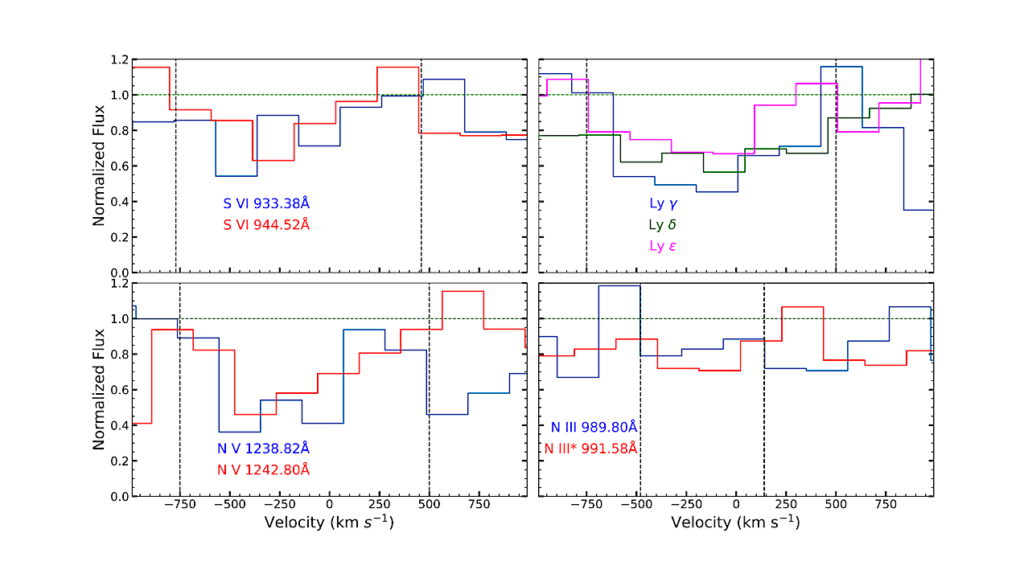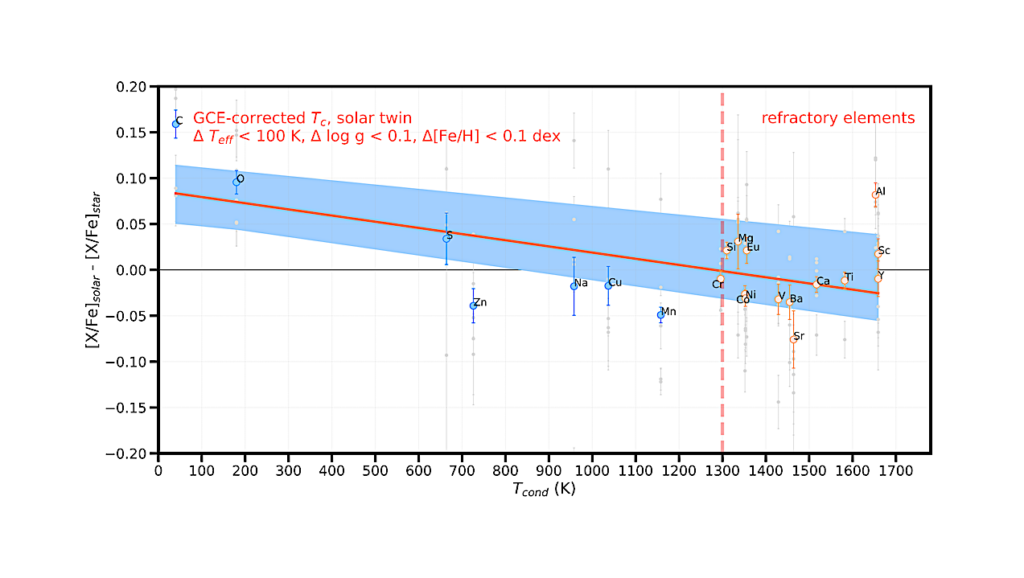Chemical Evolution In Ices On Drifting, Planet-forming Pebbles
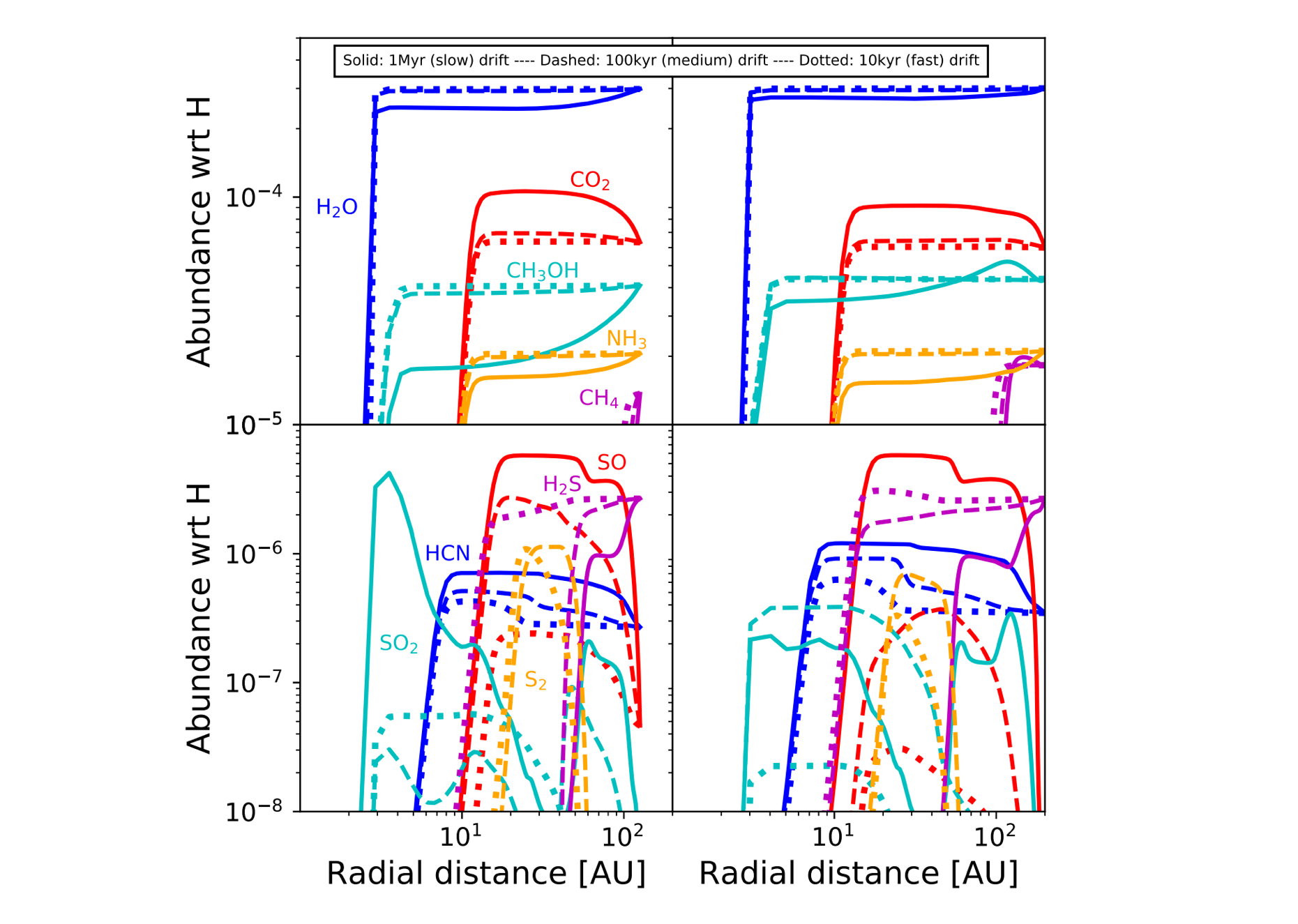
Image: Abundances of volatile ices on a drifting pebble as a function of radius (time), where the pebbles moves inwards with time. Left is drift from 128AU, right is drift from 200AU. Top panels are for species with abundances larger than 10−5 wrt H (H2O, CO2 CH3OH, NH3 and CH4). Bottom panels are for species with abundances ranging from 10−8 − 10−5 (HCN, SO, SO2, H2S and S2). Solid profiles are for slow drift (1Myr), dashed profiles are for medium drift (100kyr) and dotted profiles are for fast drift (10kyr). Colors correspond to the same species in both panels. Note that top and bottom panels have different dynamical y-axis ranges.
Planets and their atmospheres are built from gas and solid material in protoplanetary disks. Recent results suggest that solid material like pebbles may contribute significantly to building up planetary atmospheres. In order to link observed exoplanet atmospheres and their compositions to their formation histories, it is important to understand how icy pebbles may change their composition when they drift radially inwards in disks.
Our goal is to model the compositional evolution of ices on pebbles as they drift in disks, and track how their chemical evolution en-route changes the ice composition relative to the ice composition of the pebbles in the region where they grew from micron-sized grains. A state-of-the-art chemical kinetics code is utilised for modelling chemical evolution.
This code accounts for the time-evolving sizes of the solids that drift. Chemical evolution is modelled locally for 0.1Myr at two starting radii, with the micron-sized solids growing into pebbles simultaneously. The pebbles and local gas, isolated as a parcel, is then exposed to changing physical conditions, intended to mimic the pebbles drifting inwards in the disk midplane, moving to 1 AU on three different timescales.
A modelling simplification is that the pebbles are \emph{not} moved through, and exposed to new gas, but stay in the same chemical gas surroundings in all models. For ice species with initial abundances relative to hydrogen of >10−5, such as H2O, CO2, CH3OH and NH3, the abundances change by less than 20% for both radii of origin, and for the two smaller drift timescales (10kyr and 100kyr). For less abundant ice species, and the longest drift timescale (1Myr), the changes are larger. Pebble drift chemistry generally increases the ice abundances of CO2, HCN and SO, at the expense of decreasing abundances of other volatile molecules.
Christian Eistrup, Thomas Henning
Comments: Accepted by Astronomy & Astrophysics. 11 pages
Subjects: Earth and Planetary Astrophysics (astro-ph.EP)
Cite as: arXiv:2208.07390 [astro-ph.EP] (or arXiv:2208.07390v1 [astro-ph.EP] for this version)
https://doi.org/10.48550/arXiv.2208.07390
Focus to learn more
Submission history
From: Christian Eistrup
[v1] Mon, 15 Aug 2022 18:07:10 UTC (132 KB)
https://arxiv.org/abs/2208.07390
Astrobiology,


